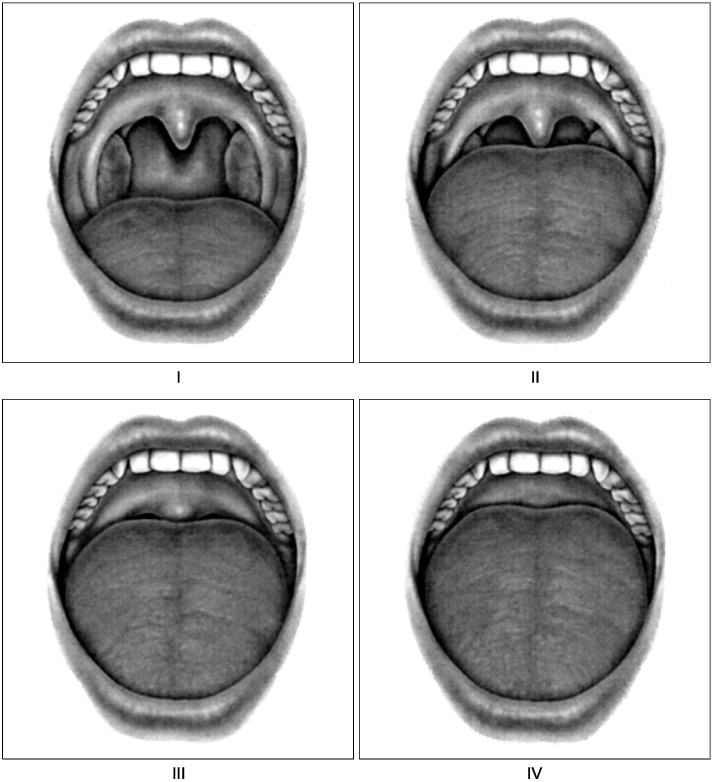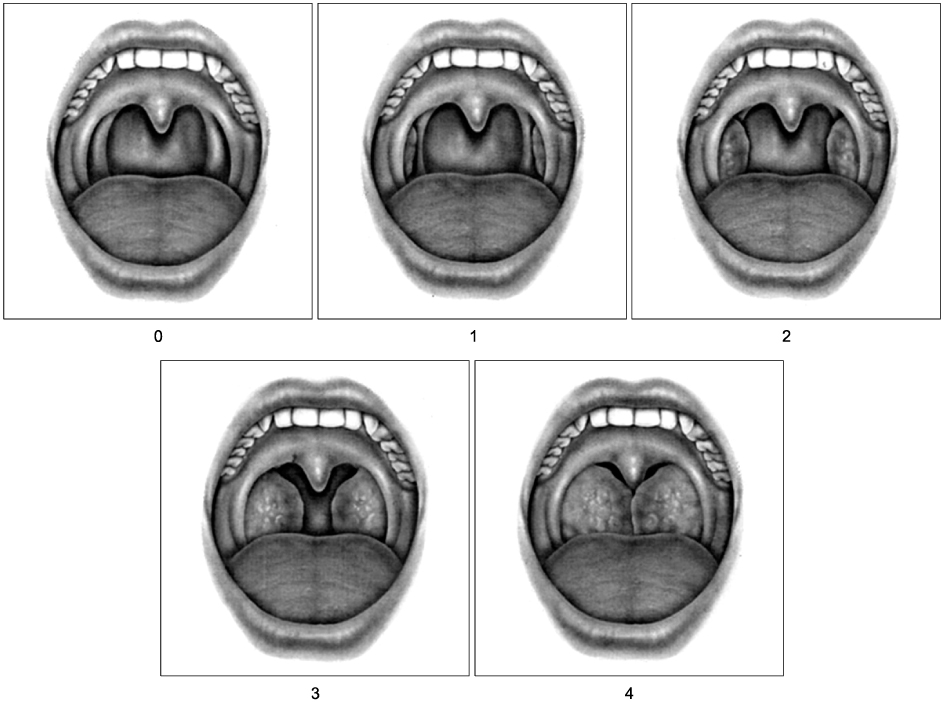Tuberc Respir Dis.
2009 Jun;66(6):417-430.
Surgical Management of Sleep-Disordered Breathing
- Affiliations
-
- 1Department of Otorhinolaryngology, Seoul National University College of Medicine, Seoul, Korea. csrhee@snu.ac.kr
Abstract
- No abstract available.
MeSH Terms
Figure
Reference
-
1. Young T, Palta M, Dempsey J, Skatrud J, Weber S, Badr S. The occurrence of sleep-disordered breathing among middle-aged adults. N Engl J Med. 1993. 328:1230–1235.2. Lugaresi E, Cirignotta F, Coccagna G, Baruzzi A. Snoring and the obstructive apnea syndrome. Electroencephalogr Clin Neurophysiol Suppl. 1982. 35:421–430.3. He J, Kryger MH, Zorick FJ, Conway W, Roth T. Mortality and apnea index in obstructive sleep apnea: experience in 385 male patients. Chest. 1988. 94:9–14.4. Guilleminault C, Stoohs R, Clerk A, Cetel M, Maistros P. A cause of excessive daytime sleepiness: the upper airway resistance syndrome. Chest. 1993. 104:781–787.5. Gould GA, Whyte KF, Rhind GB, Airlie MA, Catterall JR, Shapiro CM, et al. The sleep hypopnea syndrome. Am Rev Respir Dis. 1988. 137:895–898.6. Katz ES, Marcus CL. Sheldon SH, Ferber R, Kryger MH, editors. Diagnosis of obstructive sleep apnea syndrome in infants and children. Principles and practice of pediatric sleep medicine. 2005. Philadelphia: Saunders;197–210.7. Suratt PM, McTier RF, Findley LJ, Pohl SL, Wilhoit SC. Changes in breathing and the pharynx after weight loss in obstructive sleep apnea. Chest. 1987. 92:631–637.8. Guilleminault C. Krieger MH, Roth T, Dement WC. Clinical features and evaluation of obstructive sleep apnea. Principles and practice of sleep medicine. 1994. 2nd ed. Philadelphia: WB Saunders;667–677.9. Krieger J. Long-term compliance with nasal continuous positive airway pressure (CPAP) in obstructive sleep apnea patients and nonapneic snorers. Sleep. 1992. 15:S42–S46.10. Waldhorn RE, Herrick TW, Nguyen MC, O'Donnell AE, Sodero J, Potolicchio SJ. Long-term compliance with nasal continuous positive airway pressure therapy of obstructive sleep apnea. Chest. 1990. 97:33–38.11. Yetkin O, Kunter E, Gunen H. CPAP compliance in patients with obstructive sleep apnea syndrome. Sleep Breath. 2008. 12:365–367.12. Engleman HM, Martin SE, Douglas NJ. Compliance with CPAP therapy in patients with the sleep apnoea/hypopnoea syndrome. Thorax. 1994. 49:263–266.13. Kribbs NB, Pack AI, Kline LR, Smith PL, Schwartz AR, Schubert NM, et al. Objective measurement of patterns of nasal CPAP use by patients with obstructive sleep apnea. Am Rev Respir Dis. 1993. 147:887–895.14. Ferguson KA, Ono T, Lowe AA, Keenan SP, Fleetham JA. A randomized crossover study of an oral appliance vs nasal-continuous positive airway pressure in the treatment of mild-moderate obstructive sleep apnea. Chest. 1996. 109:1269–1275.15. Mehta A, Qian J, Petocz P, Darendeliler MA, Cistulli PA. A randomized, controlled study of a mandibular advancement splint for obstructive sleep apnea. Am J Respir Crit Care Med. 2001. 163:1457–1461.16. Johnston CD, Gleadhill IC, Cinnamond MJ, Gabbey J, Burden DJ. Mandibular advancement appliances and obstructive sleep apnoea: a randomized clinical trial. Eur J Orthod. 2002. 24:251–262.17. Walker-Engström ML, Ringqvist I, Vestling O, Wilhelmsson B, Tegelberg A. A prospective randomized study comparing two different degrees of mandibular advancement with a dental appliance in treatment of severe obstructive sleep apnea. Sleep Breath. 2003. 7:119–130.18. Prathibha BN, Jagger RG, Saunders M, Smith AP. Use of a mandibular advancement device in obstructive sleep apnoea. J Oral Rehabil. 2003. 30:507–509.19. Clark GT, Sohn JW, Hong CN. Treating obstructive sleep apnea and snoring: assessment of an anterior mandibular positioning device. J Am Dent Assoc. 2000. 131:765–771.20. Menn SJ, Loube DI, Morgan TD, Mitler MM, Berger JS, Erman MK. The mandibular repositioning device: role in the treatment of obstructive sleep apnea. Sleep. 1996. 19:794–800.21. Weaver EM, Maynard C, Yueh B. Survival of veterans with sleep apnea: continuous positive airway pressure versus surgery. Otolaryngol Head Neck Surg. 2004. 130:659–665.22. Sher AE, Schechtman KB, Piccirillo JF. The efficacy of surgical modifications of the upper airway in adults with obstructive sleep apnea syndrome. Sleep. 1996. 19:156–177.23. Horner RL, Shea SA, McIvor J, Guz A. Pharyngeal size and shape during wakefulness and sleep in patients with obstructive sleep apnoea. Q J Med. 1989. 72:719–735.24. Yucel A, Unlu M, Haktanir A, Acar M, Fidan F. Evaluation of the upper airway cross-sectional area changes in different degrees of severity of obstructive sleep apnea syndrome: cephalometric and dynamic CT study. AJNR Am J Neuroradiol. 2005. 26:2624–2629.25. Donnelly LF. Obstructive sleep apnea in pediatric patients: evaluation with cine MR sleep studies. Radiology. 2005. 236:768–778.26. Friedman M, Ibrahim H, Joseph NJ. Staging of obstructive sleep apnea/hypopnea syndrome: a guide to appropriate treatment. Laryngoscope. 2004. 114:454–459.27. Lee NR, Givens CD Jr, Wilson J, Robins RB. Staged surgical treatment of obstructive sleep apnea syndrome: a review of 35 patients. J Oral Maxillofac Surg. 1999. 57:382–385.28. Hendler BH, Costello BJ, Silverstein K, Yen D, Goldberg A. A protocol for uvulopalatopharyngoplasty, mortised genioplasty, and maxillomandibular advancement in patients with obstructive sleep apnea: an analysis of 40 cases. J Oral Maxillofac Surg. 2001. 59:892–897.29. Dattilo DJ, Drooger SA. Outcome assessment of patients undergoing maxillofacial procedures for the treatment of sleep apnea: comparison of subjective and objective results. J Oral Maxillofac Surg. 2004. 62:164–168.30. Li KK, Riley RW, Powell NB, Guilleminault C. Patient's perception of the facial appearance after maxillomandibular advancement for obstructive sleep apnea syndrome. J Oral Maxillofac Surg. 2001. 59:377–380.31. Riley RW, Powell NB, Guilleminault C. Obstructive sleep apnea syndrome: a surgical protocol for dynamic upper airway reconstruction. J Oral Maxillofac Surg. 1993. 51:742–747. discussion 748-9.32. Moore K. Site-specific versus diffuse treatment/presenting severity of obstructive sleep apnea. Sleep Breath. 2000. 4:145–146.33. Elsherif I, Hussein SN. The effect of nasal surgery on snoring. Am J Rhinol. 1998. 12:77–79.34. Pirsig W, Verse T. Long-term results in the treatment of obstructive sleep apnea. Eur Arch Otorhinolaryngol. 2000. 257:570–577.35. Powell N, Riley R, Guilleminault C, Troell R. A reversible uvulopalatal flap for snoring and sleep apnea syndrome. Sleep. 1996. 19:593–599.36. Cahali MB. Lateral pharyngoplasty: a new treatment for obstructive sleep apnea hypopnea syndrome. Laryngoscope. 2003. 113:1961–1968.37. Powell NB, Riley RW, Troell RJ, Li K, Blumen MB, Guilleminault C. Radiofrequency volumetric tissue reduction of the palate in subjects with sleep-disordered breathing. Chest. 1998. 113:1163–1174.38. Sher AE, Flexon PB, Hillman D, Emery B, Swieca J, Smith TL, et al. Temperature-controlled radiofrequency tissue volume reduction in the human soft palate. Otolaryngol Head Neck Surg. 2001. 125:312–318.39. Nordgard S, Wormdal K, Bugten V, Stene BK, Skjostad KW. Palatal implants: a new method for the treatment of snoring. Acta Otolaryngol. 2004. 124:970–975.40. Li KK, Riley RW, Powell NB, Troell RJ. Obstructive sleep apnea surgery: genioglossus advancement revisited. J Oral Maxillofac Surg. 2001. 59:1181–1184. discussion 1185.41. Riley RW, Powell NB, Guilleminault C. Maxillofacial surgery and nasal CPAP. A comparison of treatment for obstructive sleep apnea syndrome. Chest. 1990. 98:1421–1425.42. Bettega G, Pépin JL, Veale D, Deschaux C, Raphaél B, Lévy P. Obstructive sleep apnea syndrome: fifty-one consecutive patients treated by maxillofacial surgery. Am J Respir Crit Care Med. 2000. 162:641–649.



